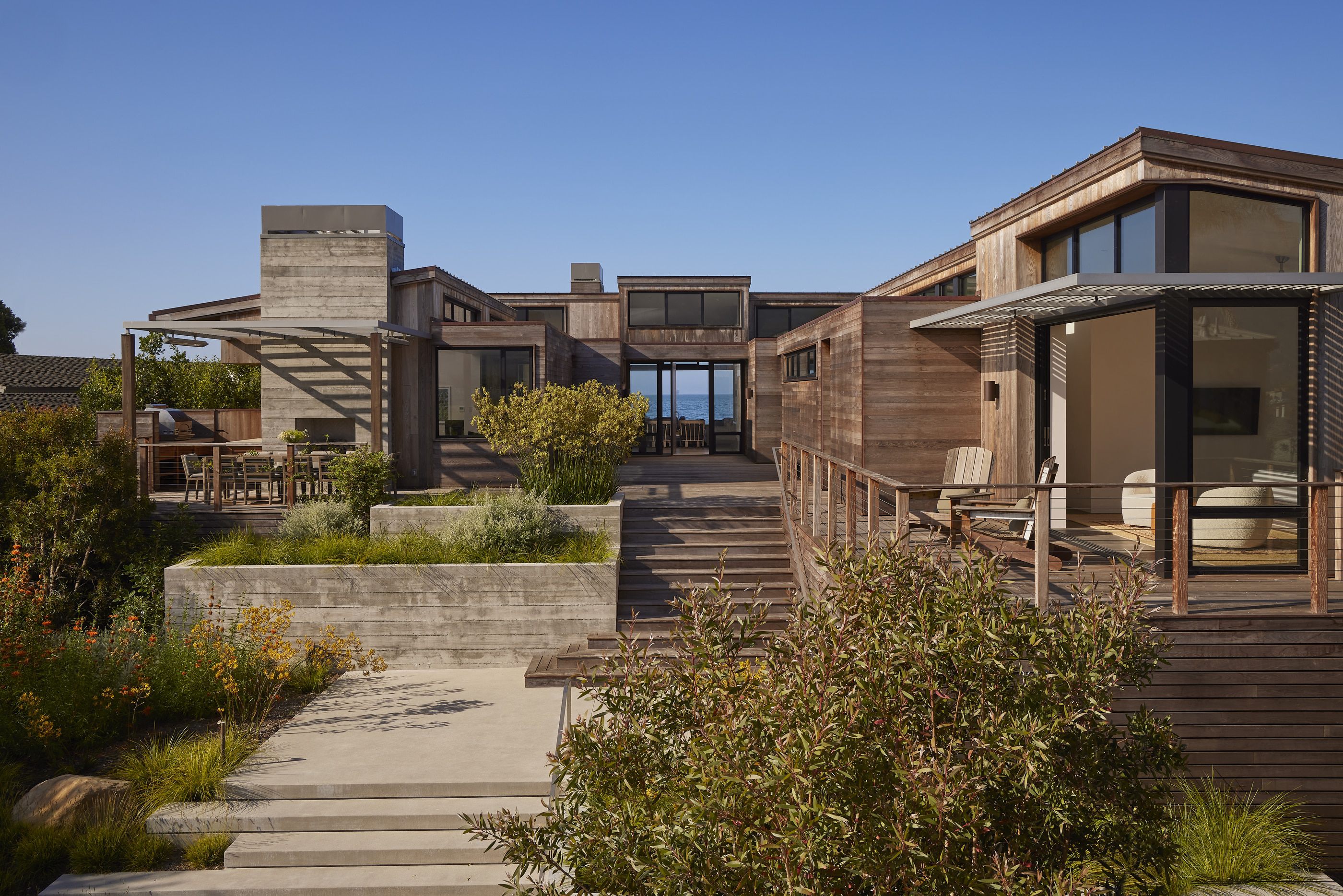

Well Connected
Linking a delicate Carpinteria wetland to the ocean, a newly built wood-clad retreat pairs wellness principles with environmental sensibility.
Navigating the labyrinthian approval process for any project in an ecologically sensitive location is always a challenge. Designing a home that deftly responds to its context with a distinctive aesthetic is another. And then there's the task of integrating all of those needs.
For the design team behind this ground-up getaway on the edge of the Carpinteria Salt Marsh Reserve, the concepts of wellness and biophilic design proved key to cohesively merging the architecture, interiors and landscaping. Within the delicate wetland setting that fronts the Pacific, "it was important to create something that would coexist in harmony with the marsh as well as the ocean,” architect Mary Andrulaitis explains. "This property connects the two; it works as a link."
Site-specific requirements and regulations helped to determine the structure, massing and materials. The flood-prone zone meant the living spaces had to be raised atop a system of drilled and poured-in-place concrete caissons. "The sensitivity of the habitat meant that there were certain extra steps we had to take,” project manager Krista Baffa Coffin notes. Notably, only two of these caissons - out of the more than 70 required - could be drilled daily due to the high-water table. Lowmaintenance concrete and wood-clad facades with copper detailing were selected for the exteriors with the idea that these materials will all gradually patinate. Peppered with pocketing glass doors and large-scale windows that draw in ocean breezes while framing the views, the dwelling now boasts a multisensory connection to its surroundings.
"The intent was to be very low-key, even though the home is elevated,” Andrulaitis says of the generously sized build. The three shedroof volumes (plus a separate garage structure) that comprise it with Sea Ranch-like geometric simplicity gesture at the Santa Ynez mountains and gradually slope towards the Pacific. Landscape architect Scott Menzel's strategy to mitigate the home's profile was to devise a series of terraced planters and staggered stairways and landings to establish a natural flow from the marshland up. His choice of grasses for movement and an emphasis on green-gray species for the plant palette "aimed not to recreate nature but fo complement it,” he explains. "I wanted this home to feel anchored in its environment.”
Enhancing a sense of place is also what designer Tim Clarke focused on - from both a big-picture perspective and down to the details. "Wellness comes in many forms and there's a lot of ways to make spaces where people feel good, spaces that benefit their lives,” he muses. "The indoor-outdoor feel, the way the light works; interior design can take that even further through colors and fabrics that feel rooted in nature.” Clarke also firmly believes that beach houses and any leisure home, really - should "encourage people to not hang out in their bedrooms, but to instead gather and live communally." The house's expansive open-concept living, dining and kitchen area pays homage to this idea. "As simple as the space is architecturally, it has incredible scale," he observes. To keep the vast room inviting and casual, the designer organized it around three key zones - the seating area by the living room fireplace, a lengthy dining table, and the kitchen island - with other smaller seating vignettes scattered throughout. "These aren't formal entertaining spaces,” Clarke notes, "the furnishings are meant for just hanging out.”
To further the laid-back vibe, the designer looked to finishes that "felt calm but not bland," he says. Light oak flooring, natural stone and glazed organic ceramic tile in the kitchen and bathrooms advance this goal while relating back to the site. Hand-applied plaster left in its raw, unpainted state also interplays beautifully with another essential element of this home: natural light. "Real plaster feels substantial, and it's amazing the way it reflects and absorbs sunlight,” says Clarke of the material, which also made an ideal backdrop for the homeowners' art collection. Where color does appear, such as in the rusty reddish leather of the dining chairs and the performance fabric of the outdoor seating, it picks up on hues from the nearby wild grasses.
Environmentally-minded features include a front door made from salvaged old-growth redwood and a rain catchment tank beneath the main deck, underscoring the holistic concepts that united the design team and brought this project to life. The result? A retreat that embraces its setting and transcends a sustainability checklist. As Andrulaitis concludes, "This home is an effort to bridge nature and a built environment, and to do so in a way that positively impacts the well-being of our clients and their guests."